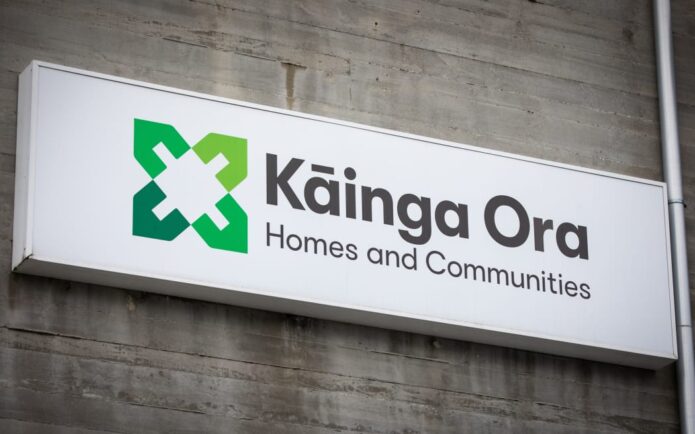PHOTO: The Heretaunga Block at Hutt Hospital will be cleared because it has been deemed an earthquake risk. Photo: RNZ / Dom Thomas
Hutt Hospital is to clear one of its main buildings containing critical services because it is an earthquake risk.
The Heretaunga Block contains the children’s ward, the maternity wing, the coronary care unit and other wards and services.
It has 210 bed spaces and accounts for 25 percent of the physical capacity across the Hutt, Kenepuru and Wellington hospitals.
The District Health Board (DHB)’s chief executive Fionnagh Doughan has sent an email to health staff saying a seismic assessment has shown the building is earthquake prone “under the current law”.
“We will be working with our partners and stakeholders – particularly CCDHB (Capital and Coast District Health Board), regional DHBs, the Ministry of Health, Interim Health New Zealand, and the Māori Health Authority and will be engaging with staff, community providers, and other providers – to complete the planning and agree next steps on this,” she says in the email.
“We will be establishing an integrated governance model to examine what the options and next steps may be and to develop an implementation plan to relocate services while ensuring continuity of, and access to, healthcare.
Services will be relocated from the building, but not immediately.
Lower Hutt mayor Campbell Barry said it was a huge hit for the city, and he worried about how Hutt Valley people would get the care they needed.
“The Heretaunga block itself houses 79 percent of the beds and services so this is a huge hit on the totality of the hospital, and it’s 25 percent of the region’s capacity as well.”
He wanted the government to step in and help.
The DHB said health services would continue as normal for now, and people should continue accessing them as normal.
Engineering advisors have told them the risk to people while they move out is low and the building has performed well in previous earthquakes but they are taking a precautionary approach, she said.
The mid-1970s building was designed just before stronger seismic design codes were brought in, coming up to just 34 percent of the New Building Standard and falling short of the more stringent rules that are in place for hospital buildings.
However, it stood up well in the Seddon and Kaikōura earthquakes and that level of compliance does not mean the building is considered dangerous or at imminent risk of failure in an earthquake.
It would take years to get the building up to acceptable levels, and repairs would be disruptive to patients, so the decision was made to plan how patients and services out to remediate the building more quickly, the DHB said.
READ MORE VIA RNZ
MOST POPULAR
 REVEALED: How many properties each New Zealand MP owns | FULL LIST
REVEALED: How many properties each New Zealand MP owns | FULL LIST eXp real estate brand coming to New Zealand in 2022 | WATCH
eXp real estate brand coming to New Zealand in 2022 | WATCH Real estate agents in legal fight over ‘humiliating’ all-staff email
Real estate agents in legal fight over ‘humiliating’ all-staff email Abandoned land for sale
Abandoned land for sale ANZ hikes deposit requirements on new builds by 5%
ANZ hikes deposit requirements on new builds by 5% Head of real estate agency spoofed in online billboards says they are ‘hilarious’
Head of real estate agency spoofed in online billboards says they are ‘hilarious’ New Zealand property prices drop sharply, will Australia follow?
New Zealand property prices drop sharply, will Australia follow? Toy billionaire Anna Mowbray and Ali Williams’ secret weapon in new home build
Toy billionaire Anna Mowbray and Ali Williams’ secret weapon in new home build Auckland agent on how real estate saved her life
Auckland agent on how real estate saved her life Economist warns house-sellers will need to adjust price expectations
Economist warns house-sellers will need to adjust price expectations
















